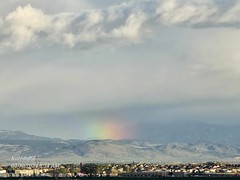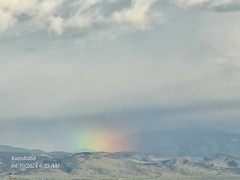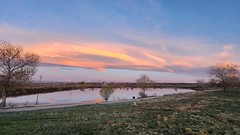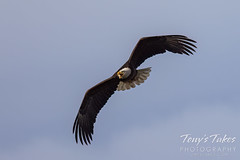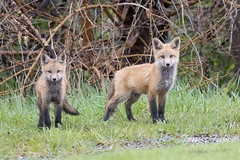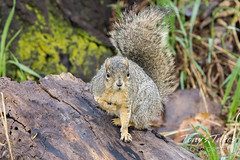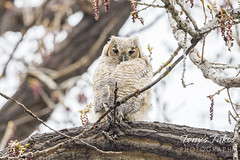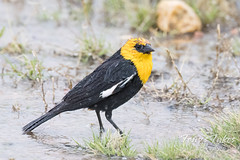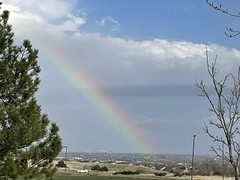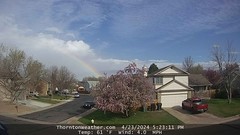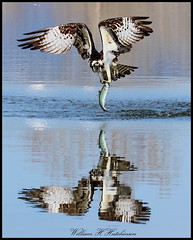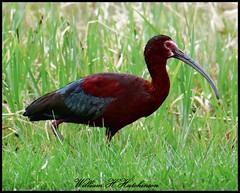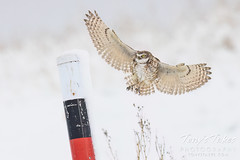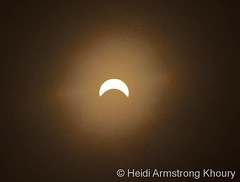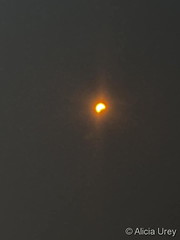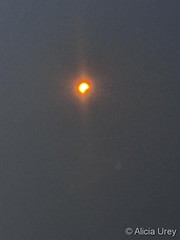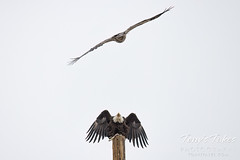
Our look back at this week in Denver includes a stunning array of extraordinary weather. Typical springtime severe weather with hail, damaging wind, tornadoes and deadly lightning are very prevalent. Snow has even made an appearance on more than one occasion.
From the National Weather Service:
18-26
In 2023…smoke and haze from massive wildfires in Canada significantly impacted air quality and visibility across Denver and the rest of northeast Colorado.
20-27
In 2002…lightning sparked a wildfire near Deckers. Extremely dry conditions and very strong winds the following day allowed the fire…known as the Schoonover…to consume 3850 acres before it could be contained. Thirteen structures were destroyed…including 4 homes…resulting in 2.2 million dollars in damage.
24-26
In 1996…a late spring snowstorm dumped 4 to 10 inches of snow over the Front Range foothills. Conifer picked up 10 inches of new snow; Aspen Springs…9 inches; and Central City…8 inches. The sticky…heavy snow clung to power lines and pulled tree branches down…causing power outages to about 1200 homes in the Conifer area. It took up to 6 hours to restore power to some residences. Lightning struck a telephone data cabinet in Conifer on the 25th…which knocked out phone service to about 1500 customers. Widespread rain fell across metro Denver… Where rainfall totaled 2.07 inches at the site of the former Stapleton International Airport and 1.66 inches at Denver International Airport where north winds gusted to 24 mph on the 26th.
In 2010…high winds preceding a cold front…swept across the Front Range foothills and urban corridor. In Aurora… The wind damaged the roof of Rangeview High School. In Conifer and Denver…the wind downed trees and power lines and caused several brief outages. The downed power lines also caused several cars to catch fire in the vicinity of 1590 Cook St. in Denver. Peak wind gusts included: 82 mph at Highlands Ranch…67 mph…4 miles east of Franktown and Longmont; 65 mph in Boulder…64 mph in Centennial and Denver International Airport…62 mph near Parker and 60 mph in Arvada.
25-26
In 1950…a major storm dumped 10.0 inches of snowfall downtown and 10.7 inches at Stapleton Airport where northwest winds gusted to 30 mph on the 25th. The storm caused extensive damage to utility wires and trees which were in full leaf. A daily record minimum temperature of 31 degrees occurred on the 25th. This was the coldest temperature on this date in 79 years and for so late in the season.
In 1989…a late season snow storm dropped snow as low as 6 thousand feet along the Front Range. Most places in the foothills had 2 to 5 inches of snow. Overnight rainfall totaled 0.33 inch at Stapleton International Airport where north winds gusted to 37 mph on the 25th.
In 1994…lightning struck a television transmitter on Lookout Mountain near Golden and burned out a switcher…which disrupted cable service for 2 hours.
26
In 1897…apparent post-frontal north winds were sustained to 42 mph with gusts as high as 48 mph.
In 1942…the all-time highest recorded temperature in May…95 degrees…occurred.
In 1978…two children were struck and killed by lightning on a junior high school playground in Parker.
In 1987…1 inch diameter hail fell near Boulder and Bennett. The hail was fairly soft and caused no damage.
In 1993…dry thunderstorms produced wind gusts to 81 mph at Jefferson County Airport near Broomfield. Several trees were blown down by the strong winds. Microburst winds gusted to 51 mph at Stapleton International Airport.
In 1995…a woman was injured in Littleton when the car she had just entered was struck by lightning. All of the windows in the car were blown out by the strike. A funnel cloud was sighted near Littleton.
In 2000…a strong microburst wind gust to 92 mph flipped a small airplane on its back and blew a dc-3 loose from its moorings…which allowed it to roll onto a grassy field at Front Range airport near Watkins.
In 2010…severe thunderstorms pounded parts of the urban corridor with very large hail…heavy rain…damaging winds and a tornado. The hail…ranging in size from 1 inch to 2 3/4 inches in diameter…struck Brighton…Commerce City and northeast Denver the hardest. The storms continued to spread destruction to the north and east…impacting byers…Hudson…Deer Trail and Prospect Valley. The combination of hail and wind stripped the bark and branches from trees. Numerous accidents were reported as the hail accumulated up to a foot deep. Snowplows were called out to clear the roadways. Flash flooding occurred along State Highway 52 between Hudson and Keenesburg…and forcing the closure of the highway. Widespread crop damage was also reported as the area was inundated with up to 18 inches of water. Extensive damage to homes…businesses and automobiles was reported with the damage estimated to be around 70 million dollars. A tornado touched down near Denver International Airport…but did no damage. Lightning struck a child in Commerce City while she was watching television. She suffered minor injuries to her leg. At the Rocky Mountain Arsenal Wildlife Refuge…a lightning strike killed a bison. At Denver International Airport…only 0.01 inch of rainfall was observed…along with a peak wind gust to 48 mph from the southeast.
In 2016…severe thunderstorms produced hail up to one inch in diameter near Castle Rock…The Pinery and Watkins.
In 2019…severe thunderstorms broke out across parts of Adams…Arapahoe…Denver…and southern Weld counties during the late afternoon and early evening. The hail ranged from 1 to 1 1/2 inch in diameter. At Denver International Airport…up to 3 inches of hail accumulated on runway surfaces. Consequently…dozens of flights were either delayed or cancelled so runways could be cleared and aircraft inspected for hail damage. A peak wind gust to 44 mph was observed from the west at Denver International Airport…with 0.65 inch of rainfall.
26-31
In 1995…a cool period with light morning showers and moderate to heavy afternoon showers and thunderstorms pushed rivers already swollen from mountain snow melt over their banks causing minor flooding. Streams and rivers such as the South Platte and Boulder creek flooded meadowlands…bike paths…roads near streams…and other low lying areas. No significant property damage was reported and crop damage was unknown. Rainfall totaled 1.79 inches at the site of the former Stapleton International Airport and only 1.51 inches at Denver International Airport.
27
In 1874…an apparent thunderstorm gust front reached the city at 6:40 pm. Strong southwest winds sustained to 48 mph for a few minutes produced large columns of dust in the city and on the prairie. There was no rain in the city.
In 1942…a duststorm swept into the city…but no damage was reported. West winds were sustained to 23 mph.
In 1953…a heavy hailstorm caused an estimated 100 thousand dollars damage across metro Denver. Larger than golf ball size hail fell in Westminster and north Denver. Only 1/8 inch hail was measured at Stapleton Airport.
In 1955…west-northwest winds at 35 mph with gusts as high as 58 mph briefly reduced the visibility to 1/2 mile in blowing dust at Stapleton Airport.
In 1981…lightning damaged power lines west of Lakewood and blew up a transformer at the Denver Federal Center. Hail 1 to 1 1/2 inches in diameter was reported in Lakewood and on I-25 south of Denver.
In 2001…hail as large as 3/4 inch in diameter was measured near Commerce City.
In 2003…hail to 3/4 inch in diameter fell near central city.
In 2006…unusually warm weather for late May produced two temperature records. The high temperature of 93 degrees was a record maximum for the date. The low temperature of 59 degrees equaled the record high minimum temperature for the date. Both previous records occurred in 1895.
28
In 1884…a thunderstorm apparently produced large hail. The hail stones were noted as unusually large…but the diameter of the stones was not measured. The hail fell for only 5 minutes. Precipitation from the storm was only 0.05 inch.
In 1898…heavy thunderstorm rainfall totaled 1.74 inches in downtown Denver. Hail of unknown size accompanied the storm.
In 1981…a woman in Aurora was struck and killed by lightning. Another bolt injured a boy on a bicycle at about the same time a short distance away. About half an inch of rain in 20 minutes caused street flooding in the area. A tornado touched down for about 2 minutes some 3 miles north of Stapleton International Airport.
In 1982…severe thunderstorms produced golf ball size hail in southeast Denver…Aurora…and Strasburg. The large hailstones undoubtedly damaged some cars in the area. At Stapleton International Airport…only 1/2 inch diameter hail was measured.
In 1991…golf ball size hail fell in Brighton. No damage was reported. Later…hail ranging in size from 3/4 inch to 1 1/2 inches in diameter fell over southwestern sections of metro Denver. In some areas…hail piled up a few inches in depth.
In 1994…thunderstorm wind gusts to 65 mph damaged 16 small airplanes and a hangar at Centennial Airport.
In 2001…severe thunderstorms produced large hail across metro Denver. Hail as large as 1 inch in diameter fell in Lakewood…Wheat Ridge…northwest Denver…near Watkins… Bennett…and Keenesburg. Hail 3/4 inch or larger fell in Brighton. Thunderstorm winds gusted to 58 mph at Denver International Airport. A small tornado (f0) touched down near Bennett…but did no damage.
In 2019…a severe thunderstorm broke out over metro Denver during the overnight hours. Some damage was reported to cars and vegetation. The hail ranged in size 7/8 inch to 1 1/4 inch in diameter. Broadcast media reported damage to 16 different greenhouses around Denver; seven experienced significant damage. In addition…two separate storms passed across Denver International Airport. The hail accumulated on the runways but no damage to aircraft was reported.
29
In 1934…the low temperature dipped to only 66 degrees…the all-time record highest minimum temperature for the month of May.
In 1958…a microburst caused a brief wind gust to 56 mph at Stapleton Airport.
In 1964…heavy rain caused flooding in the Harvey Gulch area of southeast Denver. The high water damaged homes… Businesses…streets…and bridges. At Stapleton International Airport…1.33 inches of rain were measured with 1.76 inches total rainfall on the 29th and 30th. The heavy rain during the last week of the month was the first significant precipitation since April 3rd.
In 1967…3/4 to 1 inch diameter hail stones fell in the city of Denver…but caused no reported damage. Hail as large as 3/4 inch was measured at Stapleton International Airport.
In 1975…the heaviest last snowfall of the season occurred when 5.6 inches of snow were measured at Stapleton International Airport. Rain all day on the 28th changed to snow on the 29th and accumulated to a depth of 4 inches on the ground. Northwest winds gusted to 31 mph. Precipitation (rain and melted snow) on the 28th and 29th totaled 1.48 inches.
In 1982…one man was killed and two others injured by a lightning strike as they stood under a tree in the city of Denver’s washington park.
In 1987…7/8 inch diameter hail fell near Castle Rock.
In 1990…thunderstorms over metro Denver produced several small funnel clouds and two small tornadoes. The first tornado (f0) touched down in northwest Denver and caused roof damage to a house and snapped off the tops of several trees. A second tornado (f1) touched down in Northglenn and moved into Thornton damaging a group of self storage garages…several vehicles…a wooden fence…several trees… And the roof of an auto parts store. No injuries were reported. The storms also caused minor street flooding across northern and western sections of metro Denver. Rainfall totals ranged from 1 to 3 inches. Lightning started a small fire at a home in northwest Denver. The fire was confined to the front rooms and was quickly extinguished. Snow plows were used to clear 2 to 4 inches of pea to marble size hail from a stretch of U.S. Highway 285 in Turkey Creek Canyon. Lightning felled a tree in northeast Denver…while strong winds snapped off several large tree limbs in the same area. Thunderstorm rainfall totaled 0.82 inch at Stapleton International Airport where southwest winds gusted to 30 mph.
In 1991…lightning struck a 13 year old boy in a field in Fort Lupton. The boy was in critical condition in an area hospital for 2 days before recovering.
In 1995…lightning struck a soccer goal post and injured 6 adults viewing a soccer game in Arvada. Although no one received a direct hit from the lightning…all escaped with only minor injuries…except one woman who was hospitalized.
In 1996…large hail…3/4 to 1 1/2 inches in diameter… Struck Lakewood and west Denver. Lightning sparked a small fire when it struck an oil storage tank 5 miles west of Brighton.
In 2001…lightning sparked a fire in an apartment complex in Aurora…forcing the evacuation of 24 units. Most of the fire damage was confined to the attic. Damage was estimated at 100 thousand dollars.
In 2004…a man and his son were struck by lightning while practicing on the driving range at the Meadows Golf Club in southwest metro Denver. The father was killed by the bolt…and his 16 year old son seriously injured. Three other people standing nearby received only minor injuries.
In 2010…hail up to 7/8 inch in diameter was reported in Broomfield.
In 2017…an isolated thunderstorm produced hail up to 7/8 inch in diameter near Centennial.
Continue reading May 26 to June 1: This Week in Denver Weather History →













































































